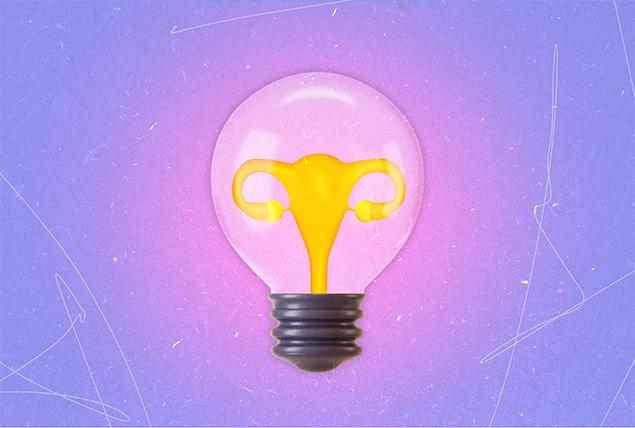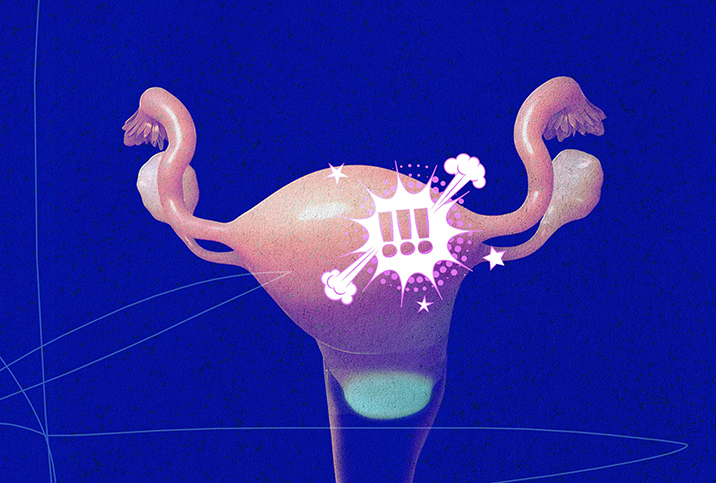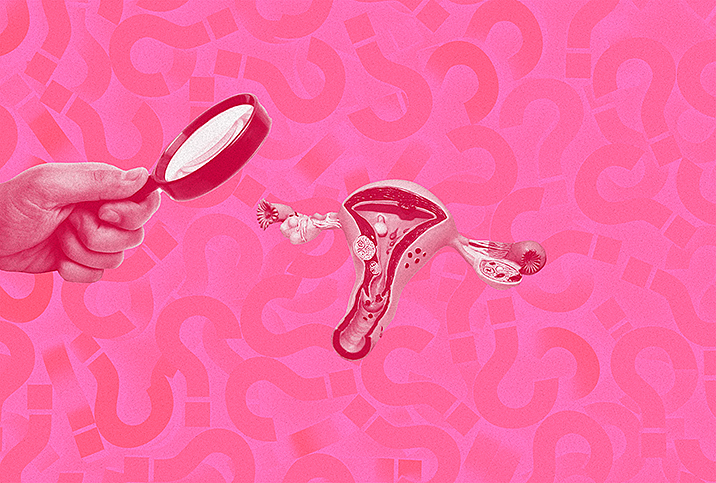Understanding Your Cervix

Understanding your reproductive anatomy is crucial for menstruating, having great sex and maintaining pregnancy, if that's in your future. Depending on the sex education you received in school—which, for some people, is very little—you may be confused about your reproductive organs and their functions.
Reproductive anatomy of biological females
For people with female anatomy, the reproductive system includes internal and external parts that help the body menstruate, have sexual intercourse and reproduce. Sometimes people refer to the vagina as representing all the external genitalia collectively, but that's not accurate.
Your external genitalia includes:
- Labia majora (the larger lips)
- Labia minora (the smaller lips)
- Clitoris
- Hymen
- Urethral opening
- Vaginal opening
Your internal genitalia includes:
- Vagina
- Uterus
- Fallopian tubes
- Ovaries
- Cervix
Today's focus is on the cervix, a small but powerful tunnel-like organ that is an essential part of your reproductive health.
"The cervix is the lowest part of the uterus," said Aldene Zeno, M.D., a urogynecologist and board-certified OB-GYN at the OB-GYN & Incontinence Center in California. "It is located at the uppermost part of the vagina. The vagina seals around the cervix and creates a barrier against the abdominal organs and the remainder of the uterus.
"I often explain to patients that the uterus and cervix are like a light bulb," Zeno continued. "The bulb portion is like the uterus, and the silver threading on the neck of the bulb is like the cervix. The way that a lightbulb screws into a [socket] is like the way that the cervix and vagina are adjacent, but the vagina is otherwise separate from the remainder of the 'bulb,' or the uterus."
What does the cervix do?
Your cervical passage is critical for allowing fluids in and out of the uterus, keeping the uterus healthy and allowing menstruation to happen.
Menstruation
"The cervix has mucous glands that protect the body from outside organisms entering beyond the vagina. In this way, the uterus and abdominal cavity can remain free from infection," Zeno said. "It is also the conduit for menstrual blood to flow from the uterus to the outside."
Every month during your period, you shed the lining of your uterus (menstrual blood), and the blood passes through the uterus and the cervix before exiting your vagina.
Pregnancy and childbirth
The cervix plays a crucial role in pregnancy and childbirth. During penetrative sex, the male partner ejaculates into the vagina. Sperm then passes through the cervix and uterus before making its way to the fallopian tubes, where one sperm potentially fertilizes an egg, creating a fetus.
"In pregnancy, the cervix plays a vital role in protecting a growing fetus from harmful organisms," Zeno explained. "It remains closed during the nine to 10 months that most healthy babies need to grow in the uterus, and it has a vital role during labor to allow passage of a new infant."
Organ support
The cervix even helps support the uterus, bladder and rectum.
"There are also fibers between the cervix and bladder, as well as the cervix and rectum, which all help to stabilize the pelvic organs and prevent them from falling down," Zeno said.
Different factors can decrease the strength of the organs.
"These structures can become weakened with age and hormonal changes such as menopause, as well as injury in pregnancy, birth trauma or other connective tissue disorders," Zeno added. "When this happens, they can herniate through the rectum or vagina and cause conditions like prolapse, as well as loss of bowel or bladder control."
You've likely heard of your pelvic floor. The cervix is the cornerstone of your upper pelvic floor.
Keeping the cervix healthy
The cervix plays a monumental role in your body, and you naturally want to keep it in tip-top shape. Avoid douching or using products that can alter your vaginal pH. While abundant vaginal cleaning products line the shelves of stores everywhere, they are unnecessary and can often cause more harm than good.
"The cervix and vagina are healthiest at an acidic pH, so it is important to avoid vaginal cleansing or douching," Zeno emphasized. "The mucinous glands in the cervix help it to self-cleanse."
Avoid sexually transmitted infections (STIs) by practicing safer sex. STIs can directly affect the health of your cervix. Use condoms or other barrier methods with new or multiple partners and get tested regularly.
The most instrumental way to help keep your cervix healthy is by scheduling regular Pap smears.
"Routine Pap exam is an important part of maintaining a healthy cervix," Zeno said. "The Pap test, also called Pap smear, gets a small sample of cells from the outer and inner portions of the cervix. These are reviewed under a microscope to screen for cervical cancer."
Understanding cervical cancer
Cervical cancer occurs in the cells of the cervix and will affect about 14,000 women in the United States in 2023, as estimated by the American Cancer Society. About 4,300 women will die from cervical cancer this year.
Cervical cancer rarely produces symptoms in the early stages and is often not detected until the later (and more deadly) stages.
Symptoms of late-stage cervical cancer include:
- Pain during sex
- Pelvic pain or discomfort
- Vaginal bleeding after sex
- Vaginal bleeding between periods or after menopause
- Bloody or watery discharge
If you are experiencing any of these symptoms, see a doctor right away. These symptoms can indicate a wide variety of conditions, so schedule an appointment with your doctor whenever something seems "off."
Reduce your cervical cancer risk
You can take steps to reduce your chances of getting cervical cancer. The first step is to practice safer sex.
"Primary prevention involves safe sex practices to minimize exposure to the virus, including limiting the number of sexual partners and using barrier methods like condoms during penetrative intercourse," Zeno said.
Secondary prevention focuses on regular screenings for cervical cancer through Pap smears.
"We know that this is an effective prevention measure because in countries where screening is available, cervical cancer is rare, whereas it is the most common gynecologic cancer worldwide, which is unfortunate because it is preventable," Zeno explained.
Roughly 93 percent of cervical cancers are preventable, according to the Centers for Disease Control and Prevention (CDC).
Finally, consider getting vaccinated against the human papillomavirus (HPV). While some people believe the vaccine is beneficial only for adolescents, that is not necessarily true. Anyone younger than age 45 can still benefit from the HPV vaccine.
"These vaccines protect against the most common types of HPV known to cause cervical cancer, and they are believed to improve cure rates in individuals even if they are infected prior to receiving the vaccine and prevent the progression to cancer," Zeno said.
Speak with your doctor about HPV vaccination.
The bottom line
The cervix is far more important to a biological female's body than you may have thought. From menstruation to pregnancy and childbirth to organ support, the cervix is one of your body's essential gatekeepers.
Keep it functioning smoothly. Schedule regular checkups with your doctor. Don't have a doctor? Use Giddy Telehealth. The easy-to-use online portal connects you with hundreds of healthcare professionals who can assist with various conditions. Many of them offer same-day appointments.


















